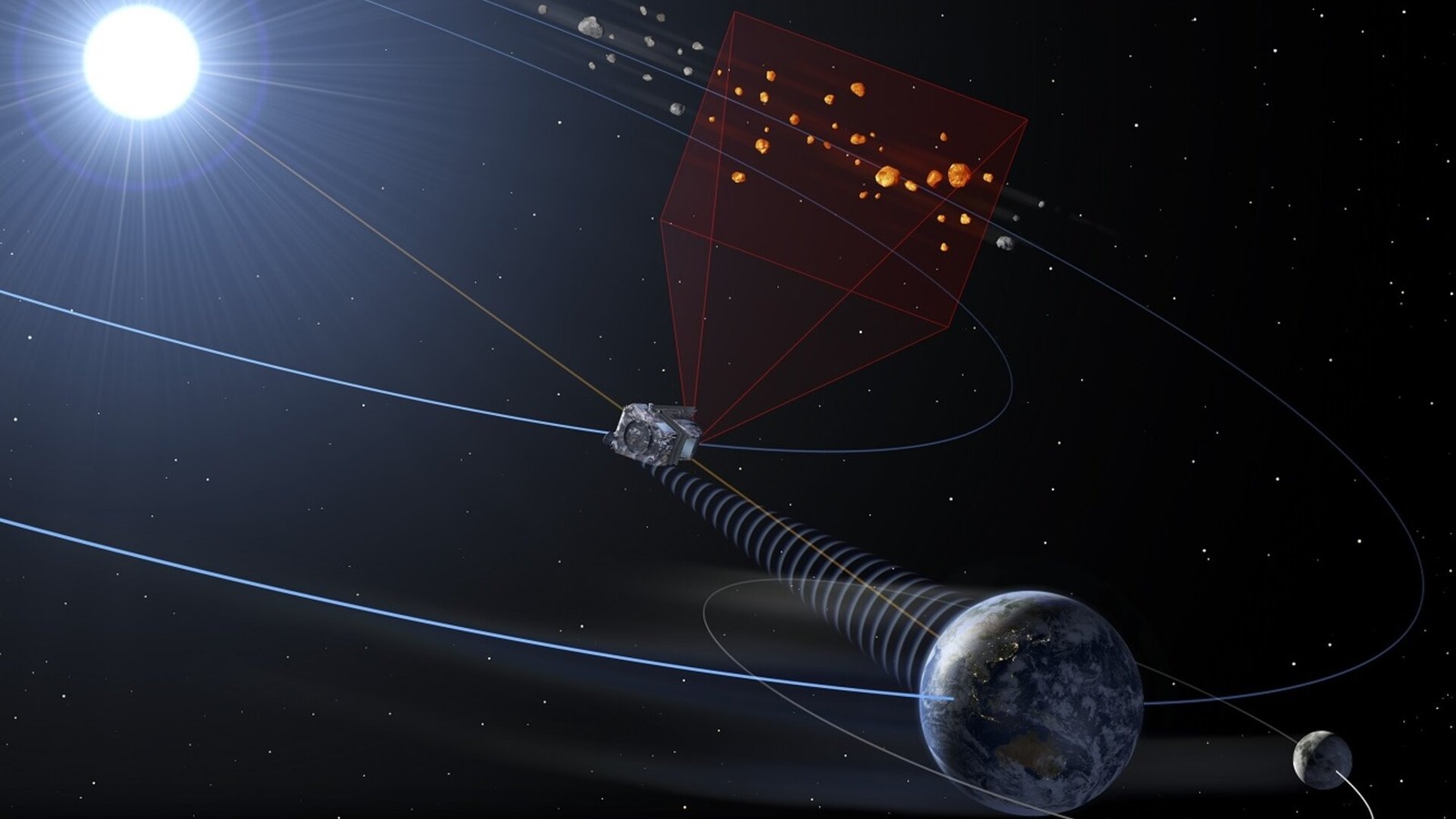
The Ingenious Way Scientists Search For Dangerous Asteroids Hidden By The Sun – SlashGear
It isn’t just a movie plot: Asteroids really could threaten planet Earth. Previous impacts like the famous Tunguska event in 1908 caused huge explosions in the Earth’s atmosphere and flattened miles of forest around the impact location. Space agencies like NASA have systems to look out into space to spot potentially dangerous asteroids before they arrive, and with enough warning we could even send a spacecraft to intercept and redirect any asteroid that threatens the planet.
However, this only works for asteroids which we can see coming. And while spotting large asteroids as they approach the sun is possible, there’s one group of asteroids we’d find it almost impossible to spot: those hidden by the glare of the sun.
The problem is that asteroids don’t produce light themselves, so they’re only visible because they reflect light from the sun. When an asteroid gets close to the sun, it gets harder to see it, because the light from the sun is so bright. Asteroids crossing the face of the sun are particularly hard to detect.
The European Space Agency (ESA) is working on a new mission called Near-Earth Object Mission in the Infrared, or NEOMIR, which aims to detect asteroids even when they are so close to the sun that they would be invisible from Earth.
How NEOMIR works
 ESA
ESA
NEOMIR is an asteroid-spotter that will be in orbit, located at the first Lagrange point between the sun and the Earth. This special orbit, which is the same one used by the James Webb Space Telescope, would allow the telescope to sit in a location with a view of asteroids coming towards Earth from the direction of the sun.
The telescope will also look in the infrared instead of the visible light spectrum, so it will be able to see asteroids even if they are dark. Some are made of lighter material, thus more reflective, but others are darker and harder to detect in the visible light spectrum. By looking in the infrared, the telescope can see the asteroids’ heat signatures no matter what color they are.
Looking in the infrared also means that the telescope will be able to see the heat coming from the asteroids without them being hidden by the bright light of the sun. By placing the telescope in space instead of on the ground, it will be able to see these infrared signals more clearly as Earth’s atmosphere won’t in the way.
“Being situated outside of Earth’s distorting atmosphere and with a telescope observing in infrared light, NEOMIR will monitor a close ring around the Sun that is impossible to observe from the ground. The mission will detect asteroids passing between Earth and the Sun – any that pose a threat and that we cannot currently see will have to pass through this ring,” the European Space Agency explains.
The plan for NEOMIR
 ESA–ScienceOffice.org
ESA–ScienceOffice.org
NEOMIR hasn’t been built yet. It’s still in development by ESA, which says it wants to launch the telescope around 2030, using an Ariane 6 rocket.
It will join other asteroid-detecting missions like NASA’s Near-Earth Object Surveyor (NEO Surveyor) mission which is scheduled for launch in 2027. This is also a space-based telescope for detecting potentially dangerous asteroids and comets, which aims to identify objects that come within 30 million miles of Earth’s orbit.
NEO Surveyor will also look in the infrared, for similar reasons to NEOMIR, and the two spacecraft are designed to work together. NEO Surveyor is designed with the aim of spotting 90% of near-Earth objects which are larger than 140 meters in diameter, while NEOMIR will look for objects of any size which could be a threat.
To get ready for NEOMIR, ESA is currently working on developing technologies for the mission like detectors and electronics requirements, with the aim to create a half-meter telescope with detectors for two infrared channels in the 5-10 micrometer waveband.
The threat from asteroids is real, and missions like NEOMIR and NEO Surveyor could help keep the whole planet safe from potentially dangerous impacts.





























![iFi's GO Bar Kensei Dongle DAC Supports K2HD Technology With Some Samurai Swagger [Updated] iFi's GO Bar Kensei Dongle DAC Supports K2HD Technology With Some Samurai Swagger [Updated]](https://i0.wp.com/cdn.ecoustics.com/db0/wblob/17BA35E873D594/33FF/45A11/QTXOLJR4xDKSNMMk2WlTgjaIlvSgcYpeU1xJzUwIoYs/ifi-go-bar-kensei.jpg?w=768&ssl=1)

























